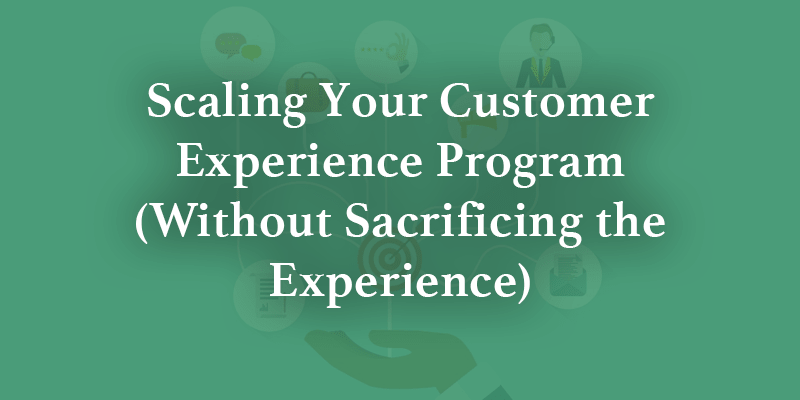Customer experience is hot—maybe not as hot as Phoenix was a few weeks back when it was literally too hot to fly, but it’s still pretty hot. At the core of customer experience are mechanisms to understand the customer’s point of view and an endgame that involves continual improvement based on their input. Various feedback mechanisms can help to capture, aggregate, and report on customer feedback & experience, but perhaps none is as ubiquitous as the Net Promoter Score® (NPS).
What is NPS?
NPS is essentially a methodology to measure loyalty and asks a simple question: How likely is it that you would recommend our company/product/service to a friend or colleague? Respondents answer on an 11-point scale ranging from 0-10 and 0-6 is considered a Detractor response, 7-8 are Passives, and 9-10 are Promoters.
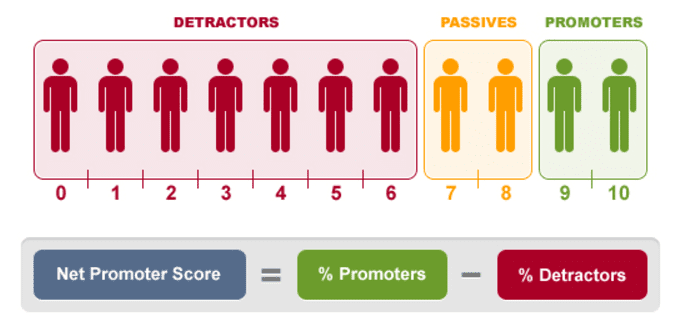
But NPS as a system can go far beyond that. When done effectively, this process provides both insight into how your customers perceive your organization and can become a vehicle to follow up with customers to understand their experience more deeply, as well as resolve concerns and enable your company to identify and play to your strengths.
For example, a customer may respond indicating that they are not super thrilled and gives you a 5. This notifies your organization that more has to be done to make this customer’s experience a great one; but what specifically? This is where the follow-up is important. By “closing the loop” with the respondent you can find out where their specific areas of concern are and help to address them.
Closing the loop is so important, in fact, that it can be said that an NPS program without follow-up is structurally incomplete. Detractors can be better understood and issues (both customer specific as well as broader company/product concerns) can be addressed. Promoters can be actively turned into references and advocates. And even Passives give you insights, as they want to be Promoters and will likely do so if just one or two key issues are given attention.
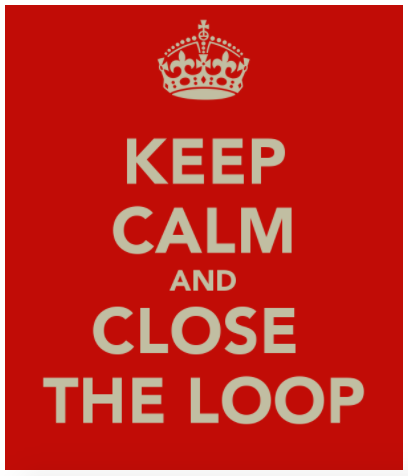
Why it matters
Understanding how your customers perceive your organization is absolutely critical to staying competitive in a landscape that changes faster than anyone thought possible. Agile companies are rewarded with additional business therefore Customer Success and actively fostering customer loyalty on an ongoing basis must be a central pillar in your corporate strategy, because rest assured, it is with your competitors.
It’s a “buyer’s market” out there—in business and especially in the software business. Staying close to the pulse of the customer and making course corrections based on that feedback is crucial. Equally crucial is leveraging your happiest customers to help accelerate new business into your sales funnel.
Challenges with scaling
Technology affords us the capability to massively scale customer outreaches and surveys, including NPS. With a little operational work and a few mouse clicks, I can send an NPS survey to literally tens of thousands of respondents at once. That’s the easy part. The hard part is what to do when the responses start coming in!
Survey tools allow for easy scoring and aggregating of thousands of responses into neat buckets. Text comments are a little trickier (more on that later), but follow up can be really difficult. How do you close the loop with all the respondents at scale? And what if a respondent is not really interested in talking further about the survey? You can spend a lot of valuable time attempting to follow up when they might be too busy or otherwise not even interested!
There’s also the question of how often to survey your customer base with the NPS survey. Popular wisdom on this topic recommends once every six months, but this doesn’t help the problem of scaling that much. And even with a twice a year program, you are really only surveying two months out of the year, which means going the other 10 months of the year without very much in the way of structured customer feedback. Is there a better way?
Strategies to do this effectively
Let’s first address the question of frequency. Surveying every customer once every six months is a good practice, but surveying all your customers on the same cadence is probably not the best option.
A better solution is to survey your customers when the response would be most meaningful to your organization. For example, let’s say your customers had an annual contract term. If you performed an NPS survey three to four months in advance of the renewal date, this would give you 1) an opportunity to understand their current sentiment going into the renewal discussion and 2) a heads up on any issues or blockers that should be resolved prior to presenting the renewal. And then the next NPS survey would be six months after that, ideally about one to two months after they renewed.
Technology makes this a lot easier if you have a survey tool that can trigger the customer outreaches based on their next renewal date. Here’s an article explaining how to do this within Gainsight.
Following a cadence like this both ensures the NPS feedback is impactful to your organization but also serves to spread out the flow of feedback over the course of the entire year. At any given time, you have current and actionable intelligence about how your customer base views your product, your services, and your company, as well as an opportunity to address it.
Now let’s look at the follow-up. If you’ve changed your cadence of surveying from ‘entire customer base every six months’ to a rolling monthly flow, you instantly make the follow-up 6x easier by spreading out the work throughout the year. For some organizations, depending on the size and type of your customer base, this might be enough. But what if your respondents every survey cycle number are in the hundreds or even thousands?
Technology to the rescue (again)
Just as we used technology to make the invitation process easier, we can also leverage tools to make the follow-up easier and personalize the customer experience. First off, sending an email thanking them for their response is table stakes, but what if we sent them an email that was custom tailored based on their response?
Again, we are talking in this example about a massive scale—hundreds or thousands of follow-ups in a given NPS cycle.
So for example: for Promoters—send them an email thanking them and inviting them to participate in your customer reference program via an online review. Maybe you use G2 Crowd or TrustRadius or Google Reviews or another online review site. Include that preferred online review site in the email message. This turns your Promoters into advocates and improves your online image in a totally automated fashion.



When following up on Detractor responses, we can also do this at scale. Let’s say that you’d like to talk personally with each customer, but only if they are interested in chatting. Set up a self-scheduling calendar using a site like youcanbook.me or calendly.com and include that link in your follow up email—again, all automated. This way you spend less time chasing and scheduling customer followups and more time actually talking to customers.
And then, for your Passives, you can send them a thank-you note and perhaps embed a pre-recorded video message about how you’d like to improve their experience, and maybe include the self-schedule calendar link if they’d like to meet with you and share more insight about how you can make that happen. Again, the goal here is to increase loyalty and engagement by sending them a follow-up message in a timely manner.
Bonus tip – dealing with the frenemy of text comments
Almost all NPS survey tools allow you to capture free-form text comments in addition to the numerical score. I like to call these ‘frenemies’ as they simultaneously represent incredibly valuable insights—your customers took extra time to type their own comments and feedback—but also are impossibly hard to truly aggregate and understand at scale. As my friend Tracy Zundel (who is NPS Certified and helped with final edits to this article) likes to say: “The worst thing you can do with comments is nothing.”
Traditional approaches might involve feeding the text responses into a third party tool to analyze the text and maybe create a word cloud, and this is pretty common. But how do you know the sentiment attached to the top mentioned words (positive or negative)? Was that feature receiving tons of praise or mountains of complaints?
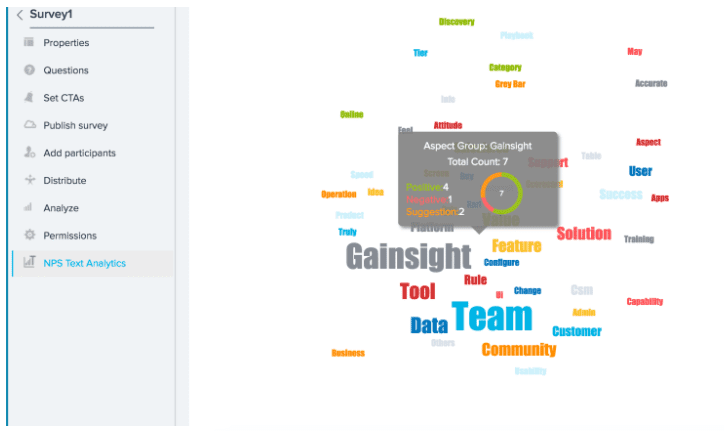
Data Scientists at Gainsight decided that this was a problem worth solving and created not only word cloud visualizations, but deeper analysis. Looking at sentence structure and text, along with machine-learning pattern recognition, within Gainsight’s NPS Survey Analytics we are able to analyze tone and intent within those responses.
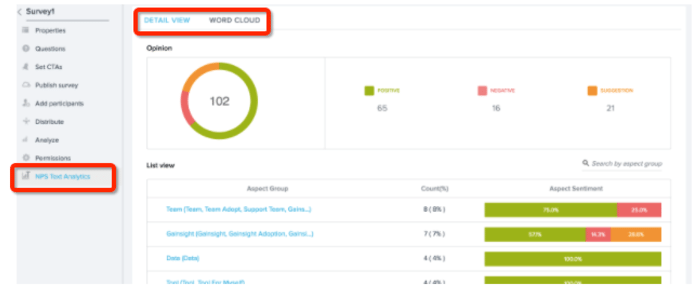
This allows not only understanding around the most commonly mentioned themes, but also how the sentiment was represented (positive, negative, and suggestion).
So now you can literally have your cake and eat it too! Ask for all the free-form text comments you dare and Gainsight can help you make sense of it all, even at tens of thousands of responses.
So there you have it! Don’t let massive scale scare you from surveying your customers and don’t worry about getting inundated by the resultant follow-up work. Let technology work for you and use the NPS program as a vehicle to increase engagement, understand risk, and opportunities better and turn your best customers into your best references. I say “Crank up the volume!”
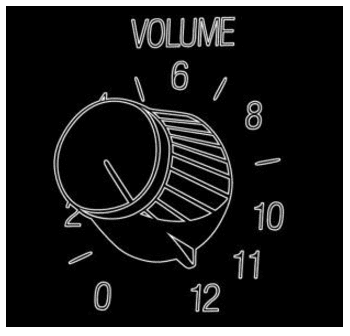
I’d love to hear your comments and other strategies you’ve employed related to scaling your NPS program! Feel free to comment below or get in touch with me at dahrens@gainsight.com.
